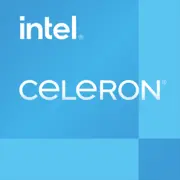Intel Celeron G3930E

Intel Celeron G3930E: 2025年の基本的なタスク向け予算プロセッサ
2025年4月現在
主な特徴: アーキテクチャと性能
2017年に発売されたIntel Celeron G3930Eプロセッサは、依然として市場で予算ソリューションとして利用されています。古さにもかかわらず、新しいOEM構成や専門店で40〜50ドルの価格で見つけることができます。
- アーキテクチャとプロセス: Kaby Lake(14nm)マイクロアーキテクチャに基づいています。2つのコア、2つのスレッド、ベースクロックは1.8GHzです。Turbo Boostがないため、ダイナミックオーバークロックは制限されています。
- グラフィックス: 統合型GPUのIntel HD Graphics 610はDisplayPortを介して4Kをサポートしていますが、最新のゲームには対応できません。
- TDP: 54W — オフィスシステムにとって控えめな消費電力です。
性能: Cinebench R23のテストでは、プロセッサは約600〜700ポイントを獲得します(比較として:最新のCore i3 13世代は7000以上)。文書作業、ブラウザ、軽いアプリケーションに適しています。
主な特徴:
- HEVC 10ビットおよびVP9のハードウェアデコーディングサポート — 4Kストリーミングに便利です。
- SpeedStepなどの省電力技術。
互換性のあるマザーボード
このプロセッサはLGA 1151ソケットを使用しますが、プラットフォームの老朽化により新しいマザーボードを見つけるのは難しいです。2025年には以下の選択肢が有効です:
- チップセット: H110、B250、H270、Q270。
- モデルの例:
- ASUS H110M-K(価格: 60〜70ドル)。
- MSI B250M PRO-VDH(価格: 80〜90ドル、在庫がある場合)。
選択のポイント:
1. BIOSのアップデート: 100シリーズのチップセット(例:H110)のマザーボードはKaby Lakeとの互換性のためにBIOSのアップデートが必要です。
2. フォームファクター: コンパクトなビルドにはmicro-ATXまたはmini-ITXを選ぶのが良いです。
対応メモリ
- メモリの種類: DDR4-2133/2400(最大64GB)。
- 重要: DDR5および他の現代の標準はサポートされていません。
おすすめ:
- オフィスPCには8GB(2x4GB)で十分です — 例:Kingston ValueRAM DDR4-2400(25〜30ドル)。
- メディアセンターには16GBを搭載して、ストリーミングビデオの際のラグを避けることができます。
電源ユニット: 選び方のポイント
TDP 54Wのプロセッサは高出力の電源を必要としません。
- 出力: 300〜400Wで十分です。
- 例:
- Be Quiet! System Power 10 400W(45ドル) — 静かで信頼性があります。
- EVGA 500 W1(40ドル) — コストパフォーマンスの良い選択肢です。
アドバイス: 電源ユニットにケチらないでください!安価で低品質なモデル(例:20ドルのノンネーム)はコンポーネントを傷める可能性があります。
Celeron G3930Eの長所と短所
長所:
- 価格: 市場で最も安価なプロセッサの一つです。
- エネルギー効率: パッシブ冷却システムに適しています。
- 互換性: Windows 10/11およびLinuxで動作します。
短所:
- 低い性能: マルチタスク(例:ブラウザ + オフィスアプリ)には向かない。
- 老朽化したプラットフォーム: PCIe 4.0のサポートがなく、NVMe SSDは速度が制限されます。
使用シナリオ
1. オフィスタスク
ドキュメント作成(Word、Excel)、メール、ビデオ通話などに最適です。例:1080pモニター用の会計用ビルド。
2. ホームメディアセンター
HDMI 1.4を介して4K@30Hzをサポートします。ミニPCをテレビに接続してNetflixやYouTubeを楽しんでください。
3. 簡単な作業負荷
- 3Dプリンターでの印刷。
- Home Assistantを介したスマートホームの管理。
不向きなもの:
- ゲーム(CS:2の最低設定でも遅延があります)。
- 動画編集やPhotoshopでの作業。
競合との比較
AMD Athlon 3000G(価格: 55〜60ドル)
- 長所: Vega 3グラフィックス(ゲーム向き)、オーバークロック可能なマルチプライヤ。
- 短所: TDPが高い(35W対54W)。
Intel Pentium Gold G7400(価格: 80〜90ドル)
- 長所: 2コア/4スレッド、DDR5のサポート。
- 短所: 高価です。
結論: Celeron G3930Eは価格において優位ですが、予算に優れたAMDにも性能で劣っています。
ビルドのアドバイス
1. ケース: コンパクトなモデルを選びましょう(Fractal Design Core 500、60ドル)。
2. ストレージ: SSDを必ず選択してください(例:Kingston A400 240GB、25ドル) — HDDはシステムを遅くします。
3. 冷却: 標準のボックスクーラーで十分ですが、静音性を求めるならArctic Alpine 12(15ドル)を選ぶこともできます。
4. ディスクリートGPU: 推奨されません — プロセッサがボトルネックになります。
総評: Celeron G3930Eは誰に向いているか?
このプロセッサは次のような人に向いています:
- 安価なオフィスPCを組み立てようとしている人(例:カフェや倉庫用)。
- エネルギー効率の高いシステムが必要な人(24/7稼働のホームサーバーなど)。
- 限られた予算がある人(全体で200ドル以下)。
2025年においてなぜまだ有効か? 弱い性能にもかかわらず、低価格と最小限の冷却要件によりニッチな解決策として機能します。ただし、ほとんどのユーザーは、30〜40ドルを追加して、より最新のモデルを選ぶ方が良いでしょう。
基本的なタスク向けの「作業馬」を探している場合は、Celeron G3930Eが役立ちます。ただし、これは過去10年のプロセッサであり、その能力は極めて限られていることを忘れないでください。
基本
CPUの仕様
メモリ仕様
GPUの仕様
その他
ソーシャルメディアで共有する
または当サイトへのリンクを追加
<a href="https://cputronic.com/ja/cpu/intel-celeron-g3930e" target="_blank">Intel Celeron G3930E</a>